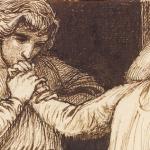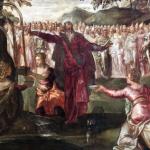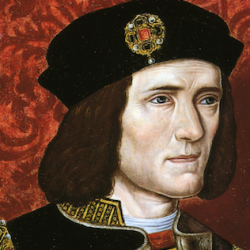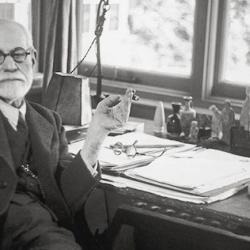After 1800, Hamlet became an emblem of human existence in all sorts of guises, employed as a symbolic turning point in Western cultural history, whatever the character of that turning point might be.
Is the main conflict of modern Europe a religious choice between Catholicism and Protestantism? Hamlet, the student of Wittenberg, symbolizes the paralyzing choice. Is the main mark of modernity a radical disjunction between subject and object?
Decades before Descartes, Hamlet already represented the modern egocentric predicament. Is modern life characterized by nausea, tedium, and accedia? Why, so was Hamlet! Is modern existence caught haunted by spectres of the past? The prince of Denmark was way ahead of the curve.
Victor Hugo said it all in 1835: “Admirable power of genius! He make’s things higher than us which live like us. Hamlet, for instance, is as true as any of us and greater. Hamlet is colossal and yet real. For Hamlet is not you or I. He is every one of us. Hamlet is not a man; he is man.”
Coleridge (who, famously, declared that he had a bit of Hamlet in him) indicated this sea-change in interpretation in his 1818 lecture on Hamlet. According to Coleridge, “the character of Hamlet may be traced to Shakspere’s deep and accurate science in mental philosophy.”
Specifically, “Man is distinguished from the brute animals in proportion as thought prevails over sense: but in the healthy processes of the mind, a balance is constantly maintained between the impressions from outward objects and the inward operations of the intellect; – for if there be an overbalance in the contemplative faculty, man thereby becomes the creature of mere meditation, and loses his natural power of action. Now one of Shakspere’s modes of creating characters is, to conceive any one intellectual or moral faculty in morbid excess, and then to place himself, Shakspere, thus mutilated or diseased, under given circumstances. In Hamlet he seems to have wished to exemplify the moral necessity of a due balance between our attention to the objects of our senses, and our meditation on the workings of our minds, – an equilibrium between the real and the imaginary worlds. In Hamlet this balance is disturbed : his thoughts, and the images of his fancy, are far more vivid than his actual perceptions, and his very perceptions, instantly passing through the medium of his contemplations, acquire, as they pass, a form and a colour not naturally their own. Hence we see a great, an almost enormous, intellectual activity, and a proportionate aversion to real action consequent upon it, with all its symptoms and accompanying qualities. This character Shakspere places in circumstances, under which it is obliged to act on the spur of the moment: Hamlet is brave and careless of death; but he vacillates from sensibility, and procrastinates from thought, and loses the power of action in the energy of resolve.”
Elsewhere, Coleridge put the point this way: “The poet places [Hamlet] in the most stimulating circumstances that a human being can be placed in. He is the heir-apparent of a throne: his father dies suspiciously; his mother excluded her son from his throne by marrying his uncle. This is not enough; but the Ghost of the murdered father is introduced to assure the son that he was put to death by his own brother. What is the effect upon the son? — instant action and pursuit of revenge? No: endless reasoning and hesitating.”
It is a small step from Coleridge to William Hazlitt’s claim that “it is we who are Hamlet.” Hazlitt went on to point out that in Hamlet Shakespeare has dramatized a common human experience, so that we cannot criticize the play “any more than we should know how to describe our own faces.”
In short, “This play has a prophetic truth, which is above that of history. Whoever has become thoughtful and melancholy through his own mishaps or those of others; whoever has borne about with him the clouded brow of reflection, and thought himself ‘too much i’ th’ sun;’ whoever has seen the golden lamp of day dimmed by envious mists rising in his own breast, and could find in the world before him only a dull blank with nothing left remarkable in it; whoever has known ‘the pangs of despised love, the insolence of office, or the spurns which patient merit of the unworthy takes;’ he who has felt his mind sink within him, and sadness cling to his heart like a malady, who has had his hopes blighted and his youth staggered by the apparitions of strange things; who cannot well be at ease, while he sees evil hovering near him like a spectre; whose powers of action have been eaten up by thought, he to whom the universe seems infinite, and himself nothing; whose bitterness of soul makes him careless of consequences, and who goes to a play as his best resource is to shove off, to a second remove, the evils of life by a mock representation of them – this is the true Hamlet.”
“Like Hamlet without the Prince,” the saying goes. But around 1800 Hamlet was detached from his play, his sadness separated from the particular circumstances that produced it, and his intellectual paralysis elevated to an emblem of a particular kind of man, if not man in general. It is this detached Hamlet that has become the primary focal point for novelists, psychoanalysts, and philosophers. Theories of Hamlet’s delay, Margreta de Grazia suggests, became theories of human consciousness in general.












